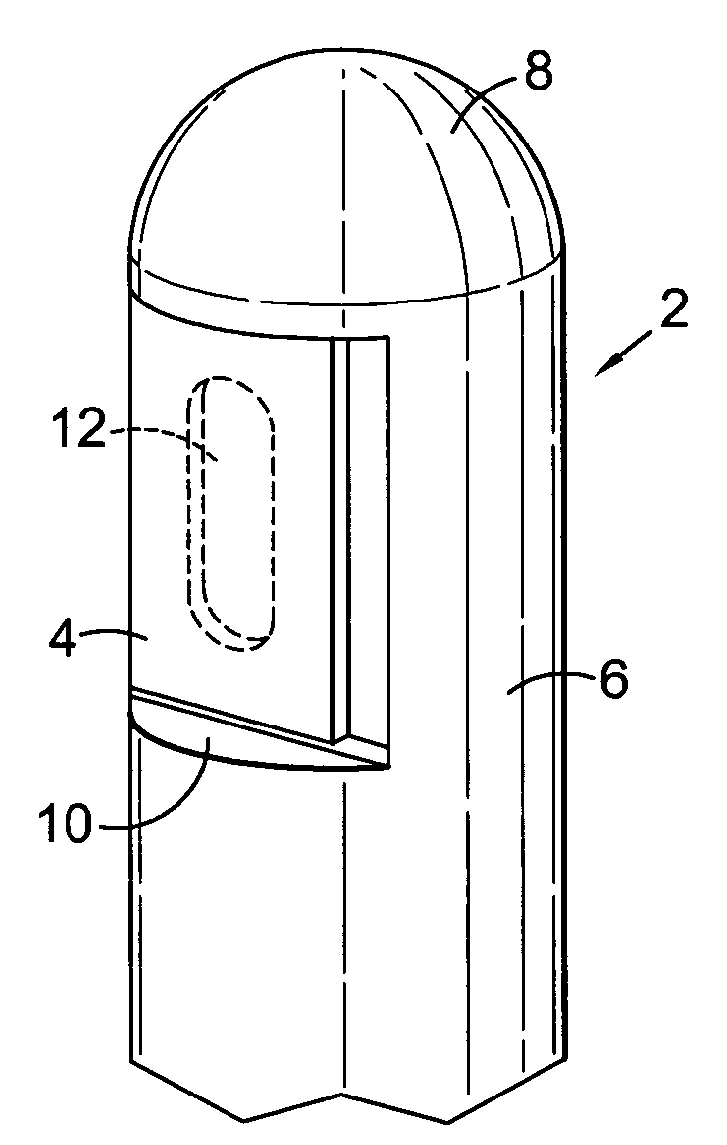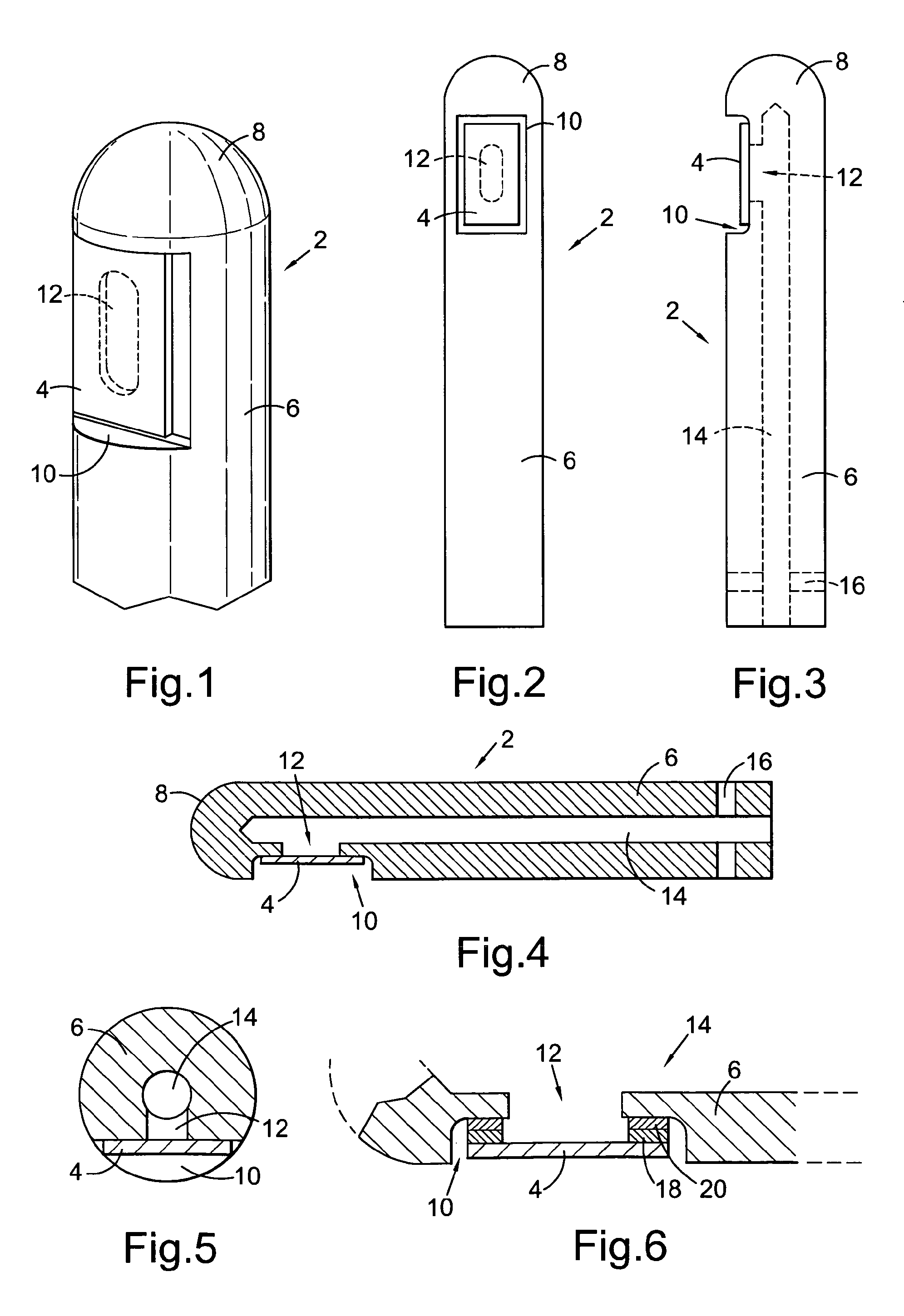Diamond window component for a laser tool
a laser tool and component technology, applied in the direction of light therapy, telescopics, rigid pipes, etc., can solve the problems of exacerbated problem, window debonding from tubular, small end tip of laser tool, etc., to achieve small end tip size, rapid temperature increase, and little energy
- Summary
- Abstract
- Description
- Claims
- Application Information
AI Technical Summary
Benefits of technology
Problems solved by technology
Method used
Image
Examples
Embodiment Construction
[0045]FIGS. 1 to 6 show various views of a diamond window component for a laser tool such as a medical probe for treating Benign Prostatic Hypertrophy. The component comprises a tubular body 2 and a diamond window 4. The tubular body 4 comprises an elongate hollow tube 6 and an end cap 8. The diamond window 4 is disposed in a recess 10 in a side wall of the elongate hollow tube 6. An aperture 12 is disposed in the side wall of the elongate hollow tube 6 under the diamond window 4 which allows laser light to pass from an interior channel 14 in the elongate hollow tube 6 out through the diamond window 4.
[0046]An end of the tubular body 2 opposite the end cap 8 is configured for attachment to an end of an optical fibre to transmit laser light down the interior channel 14. In the illustrated embodiment, an optical fibre can be inserted into the interior channel 14 and secured with screws 16 as shown in FIGS. 3 and 4. The optical fibre may be of the side-firing type. Alternatively, if an...
PUM
| Property | Measurement | Unit |
|---|---|---|
| absorption coefficient | aaaaa | aaaaa |
| absorption coefficient | aaaaa | aaaaa |
| operating wavelength | aaaaa | aaaaa |
Abstract
Description
Claims
Application Information
 Login to View More
Login to View More - Generate Ideas
- Intellectual Property
- Life Sciences
- Materials
- Tech Scout
- Unparalleled Data Quality
- Higher Quality Content
- 60% Fewer Hallucinations
Browse by: Latest US Patents, China's latest patents, Technical Efficacy Thesaurus, Application Domain, Technology Topic, Popular Technical Reports.
© 2025 PatSnap. All rights reserved.Legal|Privacy policy|Modern Slavery Act Transparency Statement|Sitemap|About US| Contact US: help@patsnap.com


